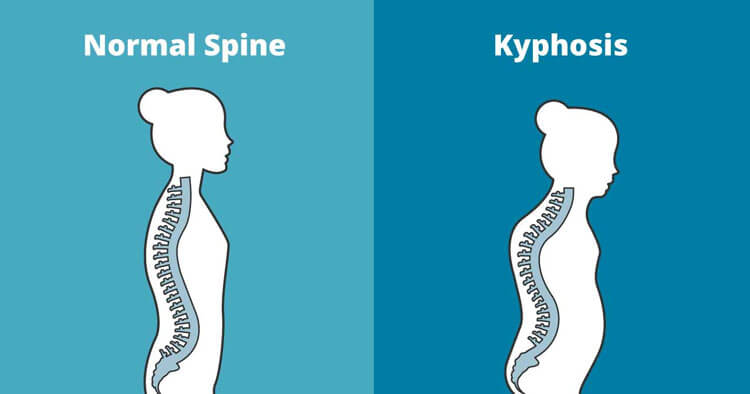Back and Joint Pain
Treatment And Diagnosis Of Upper Back Kyphosis
Diagnosis Of Upper Back Kyphosis
If an upper back kyphosis is suspected, then patients should consult their primary care practitioner such as their GP, physiotherapist, chiropractor or other spine specialist to help obtain accurate diagnosis. Diagnosis of thoracic kyphosis is gained through the gathering of information via taking a patient history as well as a physical examination of the area and any associated areas. Coupling this with appropriate, diagnostic imaging such as postural X-rays can be very useful for viewing the severity of upper back kyphosis. Taking a medical history will help detect or rule out any potential causes of thoracic kyphosis such as osteoporosis or trauma. The use of X-rays and any other investigations are helpful to measure the curvature of the spine and detect any abnormalities such as fractures or other disease processes and monitor progression of the curve over time.
Treatment Of Upper Back Kyphosis
Treatment can depend on a number of factors such as:
- Patient’s age.
- Size of the curve (kyphosis).
- Symptoms experienced.
- Underlying cause of the upper back kyphosis.
In many situations physiotherapy or like treatment is the first port of call when looking to treat or manage upper back kyphosis. With most patients being monitored to see if the curve increases over time. The hope is that with physiotherapy treatment involving exercise programs looking to increase strength of postural muscles and mobility in relevant tight soft tissues will have the combined result of working to help “straighten” the spine if a postural kyphosis is present and manage discomfort and or reduce progression if the kyphosis is structural.
Non Physiotherapy Treatment Options For Thoracic Kyphosis
With mild upper back kyphosis generally more formal or invasive treatment is not required seeing as physiotherapy (active management approach) is frequently beneficial. However, patients with severe kyphosis, significant pain or stiffness options such as bracing (the use of a Boston Brace) may be considered. The goal of a brace is to stop the curve from getting bigger during the developing years, such bracing is not generally used for adults who have a structural kyphosis but is beneficial during the developmental years. The majority of patients will not require surgical intervention, surgery is usually recommended for patients whose curvatures continue to progress or cause significant symptoms despite prior non-operative treatment.
Disclaimer: Sydney Physio Clinic provides this information as an educational service and is not intended to serve as medical advice. Anyone seeking specific advice or assistance on Treatment And Diagnosis Of Upper Back Kyphosis should consult his or her physiotherapist, general practitioner or otherwise appropriately skilled practitioner.


